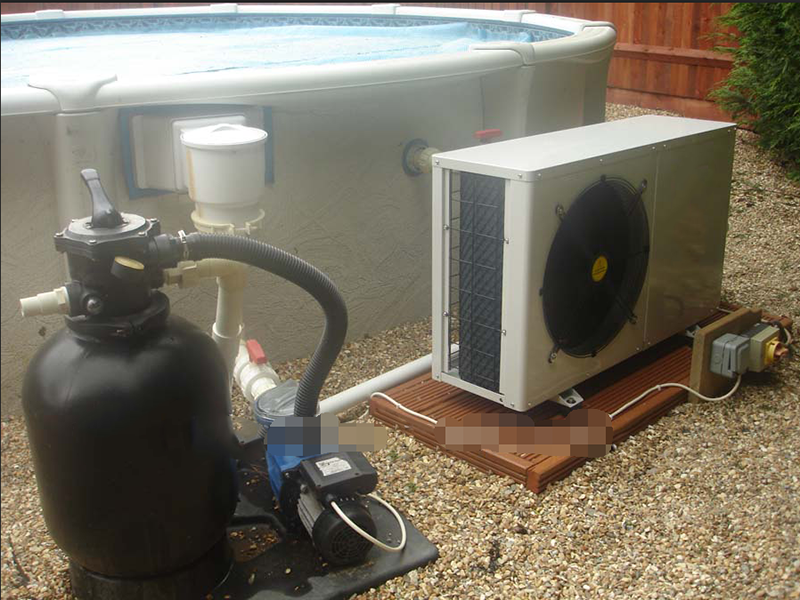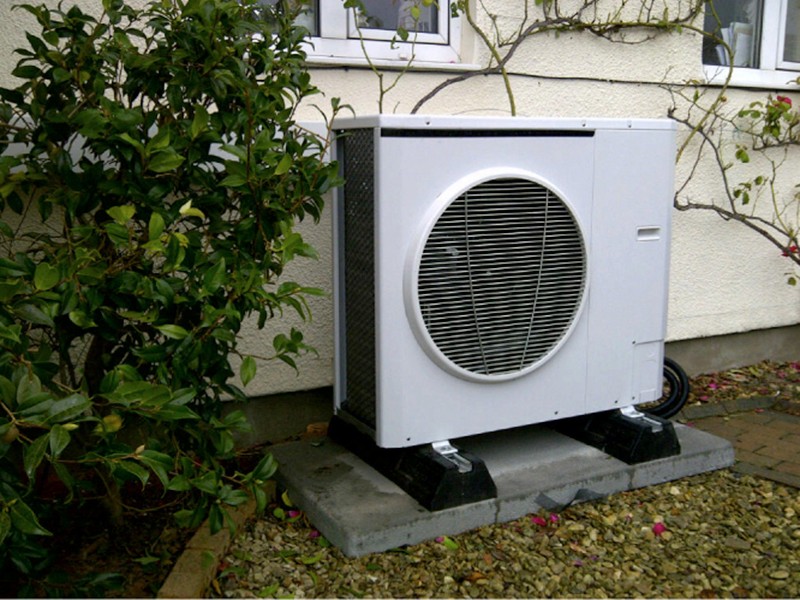3. Base
The base for the heat pump should be level and sound. You can use either a concrete base, paving slabs laid on sand or timber decking.
The vibration from the heat pump will be fairly minimal and will not disturb the paving slabs.
The heat pump can be installed above or below water level. The only proviso is that the pool circulation pump is powerful enough to deliver the water flow rate that the heat pump needs to operate.

We also sell mounting feet and lightweight slabs to mount the heat pump on. These help to raise the heat pump off the ground and also reduce noise and vibration.

While the heat pump is operating, it is normal for condensation water to drip from it - particularly in humid conditions. You should consider the condensate water that will come from the unit in the base design as the amount of water can be considerable and cause a pool of water to form. For example if the unit is mounted on timber decking, holes can be made in the decking to allow the condensate water to drain away and not cause rotting to the timber.
Some heat pumps have a water outlet tube that will channel the condensate water away, or a piece of hose can be attached to it to divert the water to a specific location.
Some customers mistakenly think that the heat pump has a leak when in fact the water coming from the heat pump is normal condensation
4. Electrical Supply
Before purchasing a pool heat pump, you should check the running current and peak current stated on the listing for your desired model.
Ensure that your electrical supply is adequate to support the running and startup currents for the unit.
It is normally recommended to run a dedicated cable back to your electrical consumer unit for the heat pump and install a dedicated breaker for the heat pump.
Most heat pumps will have a higher electrical current demand when they start. This only lasts for a millisecond or so while the compressor starts and the current then reverts to the normal running current for the unit.
The size of circuit breaker required is normally stated on the listing for each heat pump and is normally slightly larger than the startup current.
You would normally use a type "D" circuit breaker (fuse) with your heat pump. The type "D" circuit breaker allows for the higher current at startup (as the compressor starts) without tripping the breaker.
Remark:
If you‘re interesting in swimming pool heat pump products,please feel free to contact OSB heat pump.
Some of the articles are taken from the Internet. If there is any infringement, please contact us to delete it.

